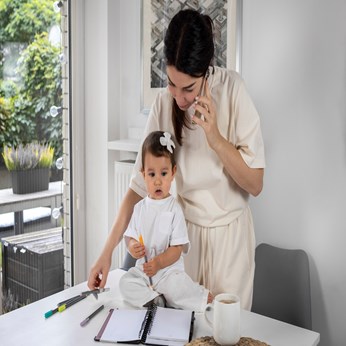How To House Hamsters
Once you have decided to adopt a hamster it becomes very important to get a cage ready to house the hamster; they are brilliant escape artists so make sure to get a cage that has a secure latch. Square high cages are highly recommended.
Here are a few tips worth noting:
• It is very essential for the hamster to be housed in a cage that has adequate space and suits the hamster’s needs; cages used for rats are not suitable as the wire spacing is very large and the hamster could escape. It is significant to note that if you are adopting Syrian hamsters it is best to buy regular hamster cages that have tunnels. Glass aquariums are best suited for Dwarf hamsters as they offer a lot of space to explore and the hamster cannot escape. In all cases make sure the spacing between the bars is less than 1 cm.
• Make sure to house the hamster in an aquarium that is at least 3 feet long; this would offer space for the hamster to run around as well as have enough space to fit in food and water bowls, toys and an a solid hamster wheel or ball. The lid should have secure wire mesh that makes it difficult for the hamster to escape. Also make sure you place the aquarium in a quiet place that is free of any other household pets such as dogs and cats to reduce the stress to your pet hamster.
• Generally it is not ideal to house 2 hamsters together; this is especially true of Syrian hamsters and Chinese hamsters as they are territorial and should never be placed even with siblings as they would fight and one of them would be seriously injured or will die. This does not however always apply to the 3 species of Dwarf hamsters; they can live alone or in pairs as long as they are introduced to each other before they are 7 weeks old. Never be fooled however by seeing hamsters sleep together as it is more out of instinct.

• The hamster needs room for water, food, toys, and an exercise wheel. Also make sure the ground has a 3 inches bedding of Care Fresh, Critter Care, or shredded paper bedding. Avoid using wood shavings as they contain harmful oils and could be harmful to the health of the hamster.
• Ensure your hamster has a lot of toys like toilet paper rolls, empty tissue boxes, tubes, tunnels, nest boxes, PVC piping, old slippers, hamster chew toys, and exercise balls and wheels in the cage to enjoy; this would help curb unhealthy habits like pacing and chewing the bars of the wire cage. Just providing the hamster wheels and balls is not enough; provide them with enough toys and rotate them to keep the hamster interested and occupied.
• Most important of all make sure the cage is escape-proof by completely sealing all holes and ensuring that no loose or removable parts are removed by the hamster. Also ensure that the gap between the bars is very small and the hamster cannot escape.
Image Courtesy: Google
Take the next step toward your goals
Share your requirement and find the best care providers in your area
-
Looking for a caretaker’s job? Build your profile and get in touch with families in your vicinity.
-
Discover nannies, babysitters, cooks, housekeepers, pet sitters, and elder care under one roof.
-
Get all the support you need to run a successful care center.
-
Search for appropriate centers near you depending on your needs.
Care Corner Insights: Blog Library

Deep Cleaning Your House: Room-by-Room Checklist for a Thorough Clean
A sparkling clean home isn’t just about looks—it’s about health, comfort, and peace of mind. Whether you’re prepping for a festival, hosting guests, or just tired of the clutter, a deep clean can transform your space. But where do you start? Here’s a

What are Senior Apartments? Experts Explain Independent Living for Older Adults
As we age, our needs and lifestyles evolve—but one thing remains constant: the desire for independence. Senior apartments are designed precisely with this in mind, offering older adults a living arrangement that balances freedom with comfort, safety,

Baby Sleep Problems: What is Sleep Regression and How to Handle It
If you’re a parent, you know that baby sleep is one of the greatest mysteries of life. One day your little one is snoozing like an angel, and the next day they’re suddenly waking up every hour, fussing, or refusing to nap. Before you panic, there’s a

Daycare Admissions in Cary, NC for New NRI Families: Documents, Health Records, and Start Dates
Moving to a new country is exciting but also comes with many responsibilities—especially when it comes to finding the right daycare for your little one. For new NRI (Non-Resident Indian) families settling in Cary, NC, understanding the daycare

Overnight Babysitters in Bellevue, WA for Business-Travelling NRI Parents: Safety & Policies
For many NRI parents living in Bellevue, WA, frequent business trips are a reality. While traveling, one of the biggest concerns is ensuring your children are safe, cared for, and emotionally supported during overnight stays. Overnight babysitters ca

Indian Home-Style Cooks in Queens, NY: Tiffin-Style Weekly Meal Prep from Your Kitchen
Queens, NY, is home to one of the most diverse food cultures in the country, and Indian cuisine holds a special place among families looking for authentic, comforting meals. While restaurant takeout is convenient, nothing compares to the taste and nu

Baby Sleep Problems: What is Sleep Regression and How to Handle It
If you’re a parent, you know that baby sleep is one of the greatest mysteries of life. One day your little one is snoozing like an angel, and the next day they’re suddenly waking up every hour, fussing, or refusing to nap. Before you panic, there’s a

What is Validation Therapy? A New Approach to Dementia Care
Caring for loved ones with dementia is one of the most emotionally challenging journeys a family can face. Traditional methods often focus on correcting memory lapses or redirecting confused thoughts—but that can sometimes lead to frustration, stress

What is a Part-Time Nanny and Do You Need One
Parenting is a beautiful journey, but let’s be honest—it can also be exhausting! Between work deadlines, household chores, and family responsibilities, sometimes there just aren’t enough hours in a day. That’s where part-time nannies step in, offerin

Part-Time Housekeeper Hiring in Alpharetta, GA: Weekly Schedules, Pricing, and Must-Do Tasks
Keeping a home spotless while balancing work, family, and personal commitments can be overwhelming. For families and professionals in Alpharetta, GA, hiring a part-time housekeeper is one of the most practical solutions. Whether you need help once a